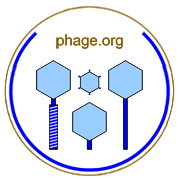

Temperate phage that has mutationally lost its ability to lysogenize.
Loss of an ability to lysogenize can come about for four distinct reasons. First is an inability to form into a prophage such as in terms of ability to insert into the bacterial chromosome or otherwise effectively segregate the prophage among bacterial daughter cells. Second is a mutation in genes which otherwise serves to motivate lysogenization. Third is loss of ability to establish or maintain the lysogenic state once so motivated (i.e., such as seen with cI mutations in phage λ). Lastly is loss of an ability to respond to otherwise functional repressor proteins. See also clear-plaque mutant.
These four cases display different phenotypic effects. In order: (1) An inability to effectively lysogenize but not because of increased tendency towards productive infection and subject to superinfection immunity by homoimmune lysogens; (2) an inability to lysogenize, but ability to maintain a lysogenic infection once established (such as following mutation occurring in the prophage), and subject to immunity; (4) an inability to maintain lysogeny (again such as following mutation occurring in the prophage) along with an inability to establish immunity but still subject to immunity; and (3) as with the second example except no longer subject to immunity. The latter thus productively infect lysogens otherwise homoimmune to the ancestral phage.
From Ptashne, M. (2004, A Genetic Switch: Phage Lambda Revisited, 3/e, Cold Spring Harbor Press, Cold Spring Harbor, NY) (p. 68): "In a lysogen, the product of gene cI—the repressor—turns off all the phage genes except cI, including those required for lytic phage growth. Genes cII and cIII function early in infection to establish lysogeny but are not required for its maintenance. We now know that CII, abetted by CIII, turns on transcription of cI. λvir bears mutations in the sites of action of repressor, the operators; represssor cannot bind to these mutated operators, and so a λvir grows lytically even in the presence of repressor. For a λ phage to become virulent it must acquire mutations in two operators, OL and OR."
For more on this topic, see Wikipedia, Google, and PubMed. Contact web master. Return to terms.











